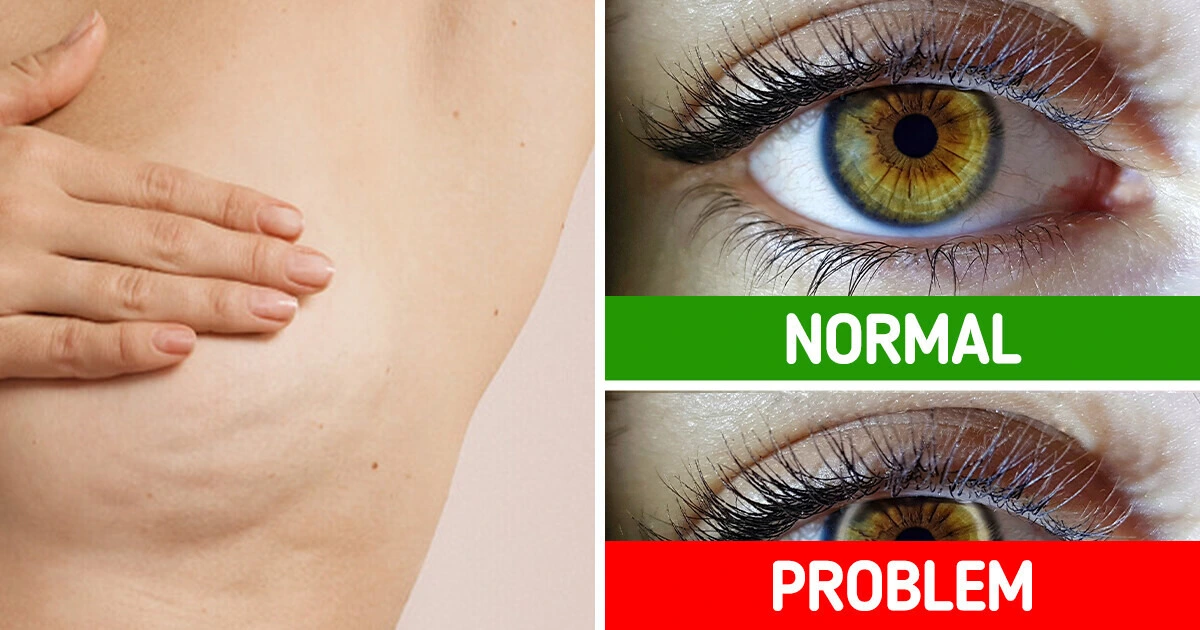Our bodies have a remarkable ability to signal when something is off. Whether through subtle changes or more obvious symptoms, these signs can provide important clues about our health.
Please note: This content is for informational purposes only and is not a substitute for professional medical advice. Always consult your doctor for guidance regarding your health and any medical concerns.
1. Changes in eye color
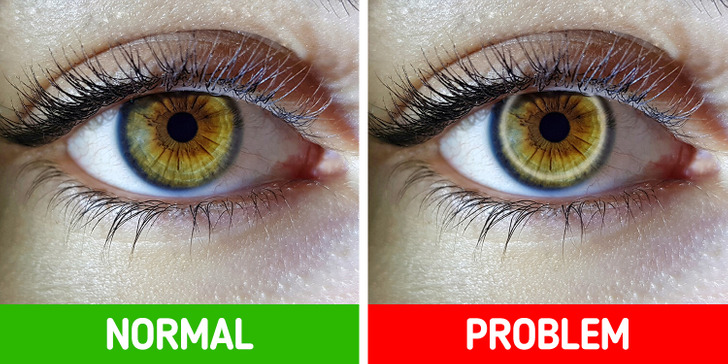
Doctors have noted that a white or gray ring around the cornea of the eyes, particularly in individuals under 45, may signal high cholesterol. While the ring itself is harmless and mainly a visual occurrence, it can act as an early warning of potential health concerns. If you notice this ring, it’s important to consult a healthcare provider, as detecting high cholesterol early can help prevent more serious conditions. Regular check-ups and cholesterol monitoring are advised, especially for those who observe this sign.
Although this ring is often linked to aging, it doesn’t always directly indicate high cholesterol in every case.
2. Breast skin dimpling
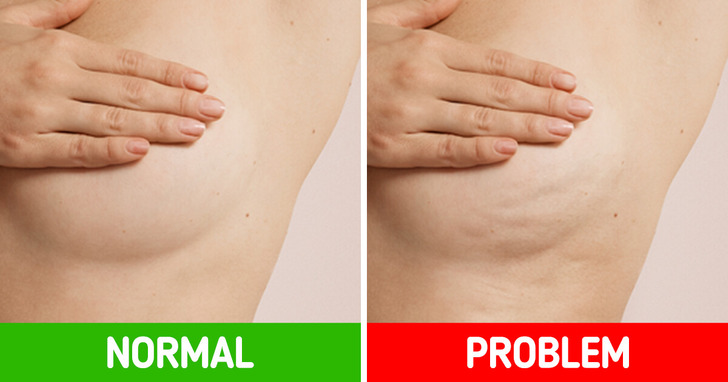
While a lump is the most well-known symptom of breast cancer, dimpling of the breast can also be a significant warning sign. This dimpling often appears as a small indentation in the skin, accompanied by an uneven texture.
Breast cancer-related dimpling happens when a tumor pulls on nearby healthy tissue, causing the skin to distort. It may also become noticeable if a lump is located close to the skin’s surface.
However, it’s important to remember that dimpling can also be caused by noncancerous conditions, such as fat necrosis, where damaged fatty tissue alters the skin’s appearance. If you notice any changes, consult a healthcare professional for evaluation.
3. Grinding teeth
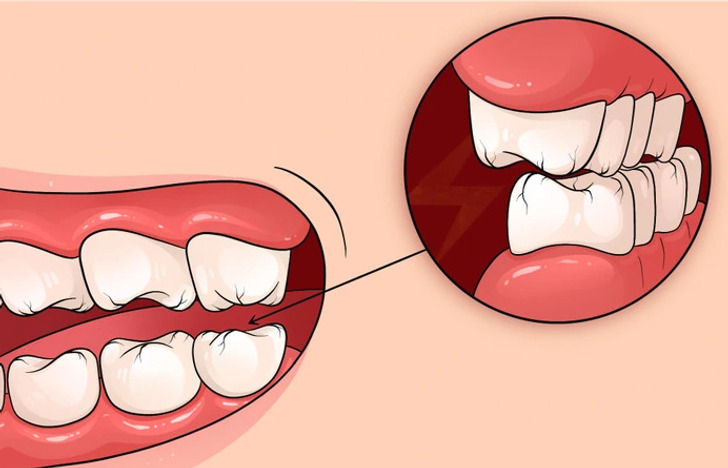
Recent research suggests that teeth grinding (bruxism) may sometimes be linked to parasitic infections, though the exact cause-and-effect relationship is still unclear. Parasitic infections often lead to problems like nutrient deficiencies and food sensitivities, which can increase stress on the body.
Since teeth grinding is commonly associated with stress, this connection might help explain the relationship. Additionally, parasites significantly affect the gut, which communicates with the brain via the vagus nerve. This raises the possibility that toxins from infections could disrupt brain signaling, potentially contributing to bruxism. More research is needed to fully understand these complex interactions.
4. Dark patches of skin
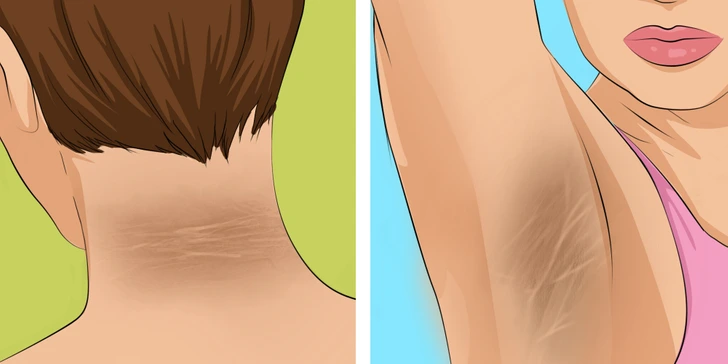
The exact cause of dark patches on the skin, known as melasma, isn’t fully understood, but it is closely tied to sensitivity to estrogen and progesterone. This means factors such as birth control pills, pregnancy, and hormone therapy can trigger or worsen the condition.
Stress and thyroid disease are also thought to play a role in the development of melasma, though the precise mechanisms remain unclear.
5. Eyebrow loss
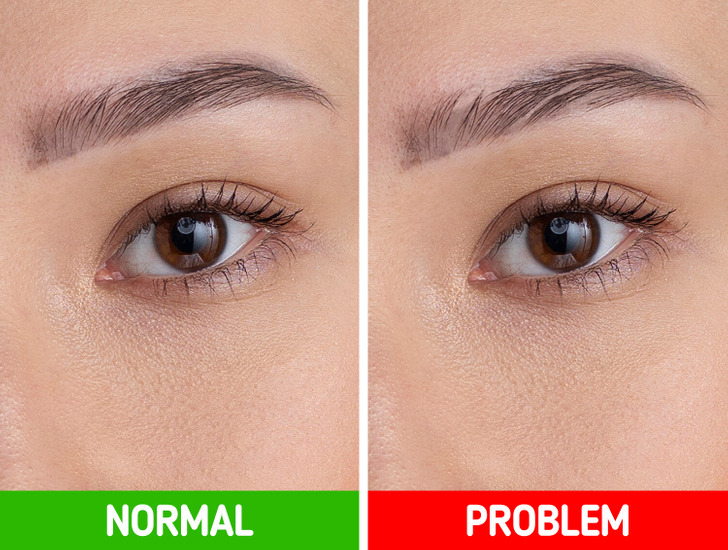
Eyebrow hair loss, known medically as eyebrow hypotrichosis or madarosis, can result in thinning or patchy areas in the eyebrows. This condition can affect both men and women and may occur on one or both sides. Additional symptoms may include itchiness, dry skin, or hair loss in other parts of the body.
Multiple factors, such as hormonal imbalances, nutritional deficiencies, or skin conditions, can contribute to eyebrow hair loss. Pinpointing the root cause is crucial for finding the most effective treatment.
6. Yellow tears
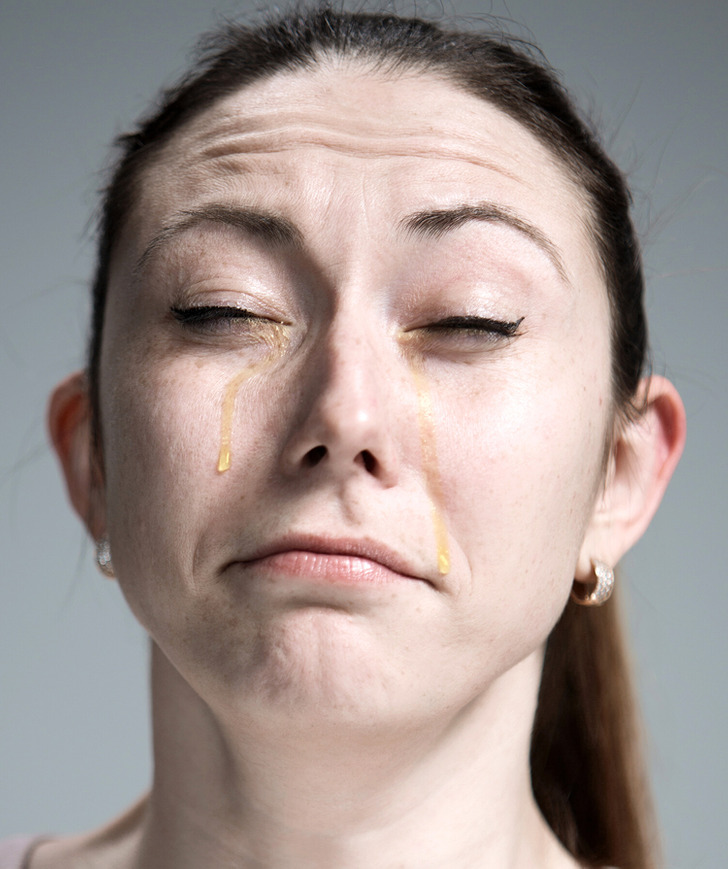
The meibomian glands in your eyes produce oil that helps keep them lubricated and prevents dryness. However, if these glands produce excess oil, it can mix with your tears, making them appear yellow and feel greasy.
Yellow tears can also result from other causes, such as infections or allergies. In these cases, the yellow color may come from pus due to an infection or a reaction to external irritants.
7. Mouth sores and tongue swelling
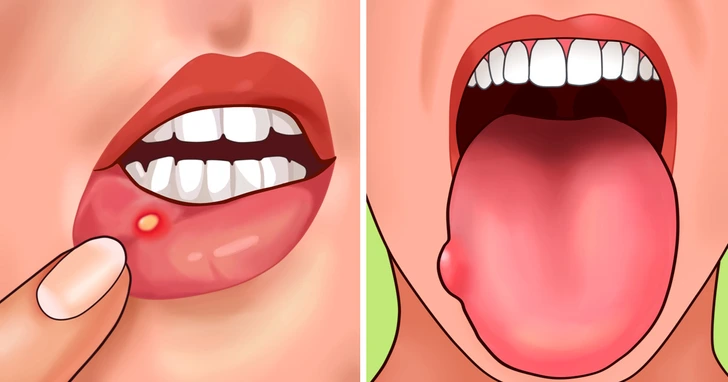
These symptoms usually emerge when folate deficiency has become severe, so they should not be overlooked. Your tongue may look swollen, red, or shiny, particularly at the tip and edges.
Additionally, the decrease in red blood cells can lead to pain while swallowing, along with a sore tongue and stomatitis (mouth inflammation).
8. Skin and nails problems
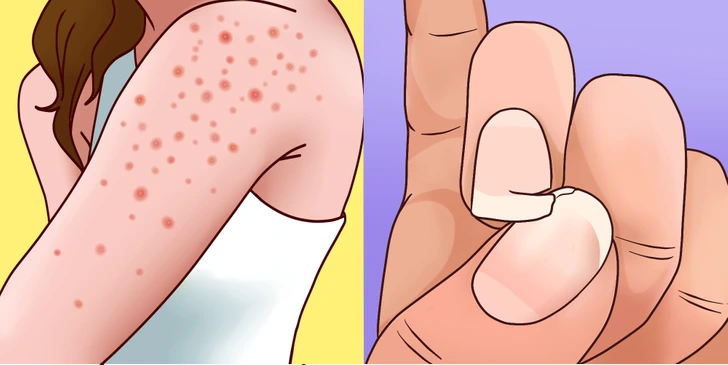
Hair keratosis and herpetiform dermatitis are two skin conditions associated with gluten intolerance. Symptoms often include itchy rashes that can appear on the hands, torso, face, buttocks, elbows, and hairline. Brittle or weakened nails may also occur.
Other skin problems, such as eczema-like reactions, can also signal a gluten-related issue.
9. Floating stools

While stools usually sink in the toilet, certain factors can cause them to float. The foods you eat, such as beans, milk, or apples, can increase gas in your stools, making them buoyant.
Floating stools are typically harmless, but if they persist, you might want to cut back on gas-producing foods to see if it helps.
10. Feeling cold all the time
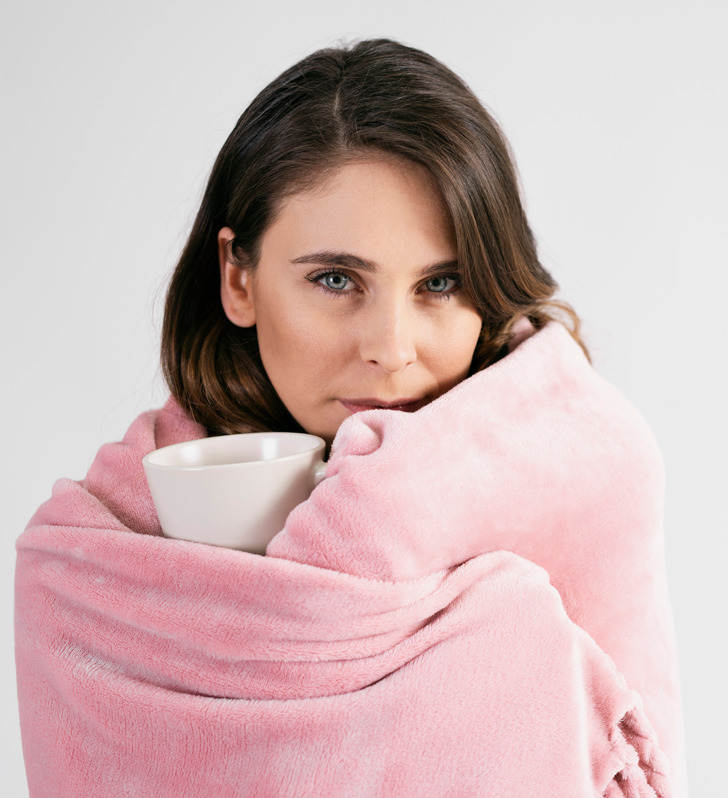
As temperatures drop, it’s natural to want to warm up your home. However, if you often find yourself needing an extra blanket, it might be a sign of low thyroid activity. Reduced thyroid hormone levels can slow your metabolism, leaving you feeling cold even in a comfortably heated room.
This condition, called hypothyroidism, can also lead to symptoms like fatigue and weight gain. If you suspect a thyroid issue, it’s wise to consult a healthcare provider for proper evaluation and treatment.
Paying attention to your body’s signals is key to identifying potential health problems early and preventing more serious complications later on.
Preview photo credit wayhomestudio / Freepik, wirestock / Freepik
credits by: Brightside.me
